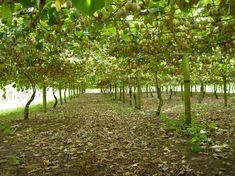
Machinery suppliers Compac Sorting Equipment has fostered its reputation in a variety of fresh produce sectors and is making waves when it comes to kiwifruit.
While kiwifruit packhouses have not always been the quickest to update their facilities, Compac says its latest blemish sorting technology is making a big impact among those willing to embrace it.
For as long as kiwifruit has been a commercial crop, many of the challenges for the industry, apart from the vagaries of actually growing the crop, have arisen in its sorting and market presentation, according to the New Zealand-based company.
Manual post-harvest techniques have traditionally created issues through inconsistency, and the advent of the Gold variety has made gentle handling vital for a fruit often described as being “a danger to itself” with its very thin skin and crusty blossom “beak”, says Compac.
The company is proud of the reputation it has developed in defect grading for the fresh produce industry, which it says began in the late 1990s when the company helped Sunkist growers supplying California’s Golden Valley Citrus packhouse avoid a potential crop write-off from frost-damaged fruit. Since that time Compac’s blemish technology has been applied to a large number of crops, including mandarins, lemons, potatoes and apples.
Meanwhile, the company has observed that kiwifruit producers are increasingly looking to adapt systems it originally developed for delicate crops, such as apples and stone fruit, for sorting and packing both the Zespri Gold variety and the traditional green kiwifruit. These new ideas not only minimise the ‘collision factor’, but help the fruit make the journey from orchard to shop shelf in as perfect condition as possible, it says.
After 20 years of experience in supplying systems and technology to assist kiwifruit packers in meeting stringent international quality standards, Compac says it is now set to take kiwifruit post harvest equipment to the next level, with the launch of a new machine.
According to Compac, its InVision 9000 blemish sorting technology has already caused quite a stir among New Zealand producers.
When combined with pre-grader systems, the new technology creates a powerful tool for increasing throughput and significantly improving quality consistency, as well as saving labour costs, it claims.
Three post-harvest facilities are now running Compac’s InVision 9000 blemish pre-grading technology. And, according to the company’s follow-up analysis, these facilities are reporting up to a 30 per cent increase in throughput, while at the same time managing to rationalise labour. The technology is reportedly consistent in removing fruit with major blemishes, shape issues and physical damage, and distributing the fruit to maximise the capacity of the traditional packing line.
Stewart Weston, chief executive of Apata Packhouse in New Zealand, says the key to sound business is optimising Class I packout. To achieve this the company invested in Compac’s eight-lane blemish sizer dedicated to sorting 1.5 million trays of Gold kiwifruit.
The machine will also be programmed for an additional one million green fruit this season. Weston says the latest technology from Compac was the obvious choice when he was looking to upgrade the facilities at Apata. “We evaluated a number of options before choosing Compac and in doing so, we aligned ourselves with a world leader, with proven technology in fruit processing that adds value to our growers’ products,” he says.
Similarly, two years ago, Mark Hume of packing house, Hume Pack and Cool, faced the decision of having to double his shed space and staff capacity or invest in pre-grading quality sorting technology. In his decision to move with the times, Hume was the first in the NZ industry to install pre-graders, he says. He opted for a six-lane grader and says the installation has had a tremendous impact.
“We’ve run two whole seasons through now and the result is excellent,” says Hume. “The shed is extremely efficient and the staff love it; it makes their job much easier and more enjoyable. Whereas before they were looking at 100 per cent of the fruit and trying to grade out 10 per cent, they are now looking at 20 per cent of the fruit and grading about half.” Hume’s system of packout has improved as well, he says, with staff having time to analyse kiwifruit more accurately.



